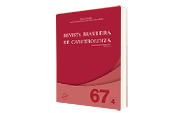Performance of Physiotherapy in Neoplastic Lymphedema in a Patient with Metastatic Breast Cancer: Case Report
DOI:
https://doi.org/10.32635/2176-9745.RBC.2021v67n4.1293Keywords:
Breast Neoplasms, Lymphedema/therapy, Physical Therapy Modalities, Palliative CareAbstract
Introduction: Breast cancer is one of the most common neoplasms among women in the world, accounting for 29.7% (66,280) of new cases in Brazil, and also corresponding to the main cause of death in this group (16.1%, 16,724). Neoplastic lymphedema is a malignant process of breast carcinoma, not very common but related to the disease progression. The gold standard treatment for lymphedema is the complex decongestive therapy (CDT) in order to reduce and maintain limb volume and increase the patient’s quality of life. However, treatment for neoplastic lymphedema is little explored in the literature. The objective of this study was to analyze and report the impact of CDT on the control of neoplastic lymphedema symptoms and volume. Case report: Patient with breast cancer in palliative treatment and neoplastic lymphedema in the homolateral upper limb. The proposed physiotherapeutic treatment for this patient was the adapted CDT, which was split in two phases. The first phase was to reduce the lymphedema volume with skin care orientations, passive exercises (because of monoplegia and joint restriction) and compressive bandaging. Even if the lymphatic drainage was not applied, the treatment brought significant improvement in reducing the left upper limb volume with loss of 1,045,58 mL between the beginning and end of the first phase. The second phase was targeted to maintenance, indicating the use of compressive clamp to control the volume. Conclusion: The adapted CDT may be an option to minimize the volume of neoplastic lymphedema.









